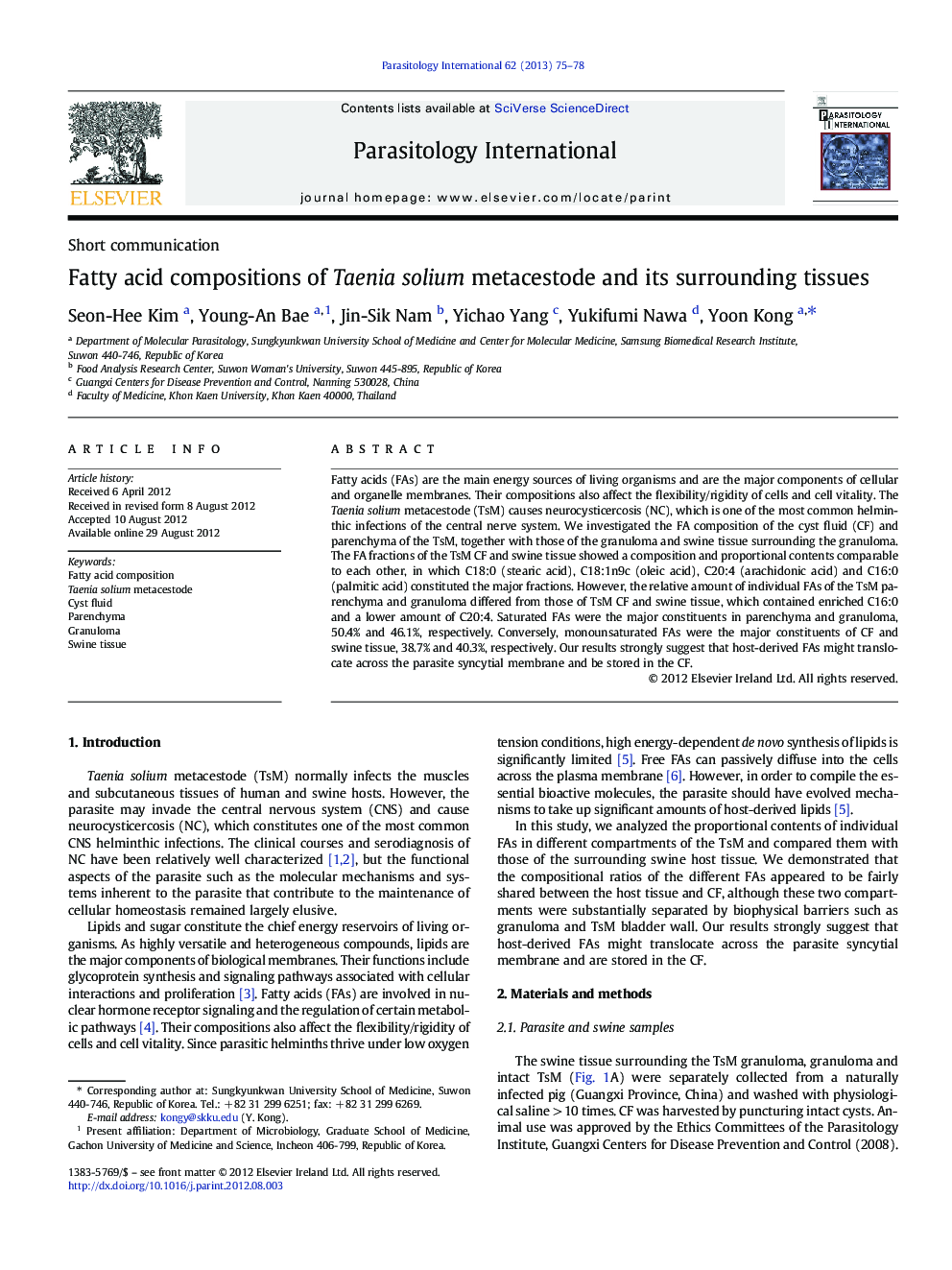| Article ID | Journal | Published Year | Pages | File Type |
|---|---|---|---|---|
| 3417875 | Parasitology International | 2013 | 4 Pages |
Fatty acids (FAs) are the main energy sources of living organisms and are the major components of cellular and organelle membranes. Their compositions also affect the flexibility/rigidity of cells and cell vitality. The Taenia solium metacestode (TsM) causes neurocysticercosis (NC), which is one of the most common helminthic infections of the central nerve system. We investigated the FA composition of the cyst fluid (CF) and parenchyma of the TsM, together with those of the granuloma and swine tissue surrounding the granuloma. The FA fractions of the TsM CF and swine tissue showed a composition and proportional contents comparable to each other, in which C18:0 (stearic acid), C18:1n9c (oleic acid), C20:4 (arachidonic acid) and C16:0 (palmitic acid) constituted the major fractions. However, the relative amount of individual FAs of the TsM parenchyma and granuloma differed from those of TsM CF and swine tissue, which contained enriched C16:0 and a lower amount of C20:4. Saturated FAs were the major constituents in parenchyma and granuloma, 50.4% and 46.1%, respectively. Conversely, monounsaturated FAs were the major constituents of CF and swine tissue, 38.7% and 40.3%, respectively. Our results strongly suggest that host-derived FAs might translocate across the parasite syncytial membrane and be stored in the CF.
Graphical abstractFigure optionsDownload full-size imageDownload as PowerPoint slideHighlights► We compared fatty acid (FA) levels of T. solium metacestode (TsM), granuloma and host tissue. ► Compositional ratio of FAs was parallel between host tissue and cyst fluid (CF). ► C18:0, C18:1n9c, C20:4 and C16:0 were major FAs of CF and swine tissue. ► TsM parenchyma/granuloma contained higher C16:0 and lower C20:4 than CF/swine tissue.
